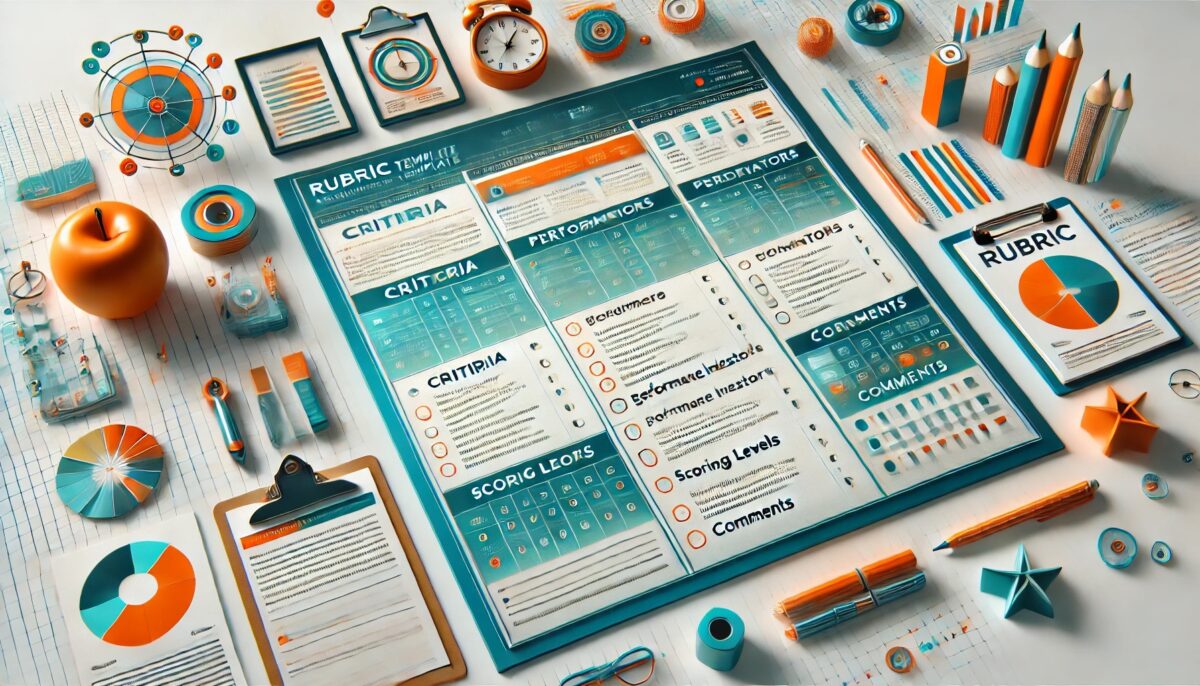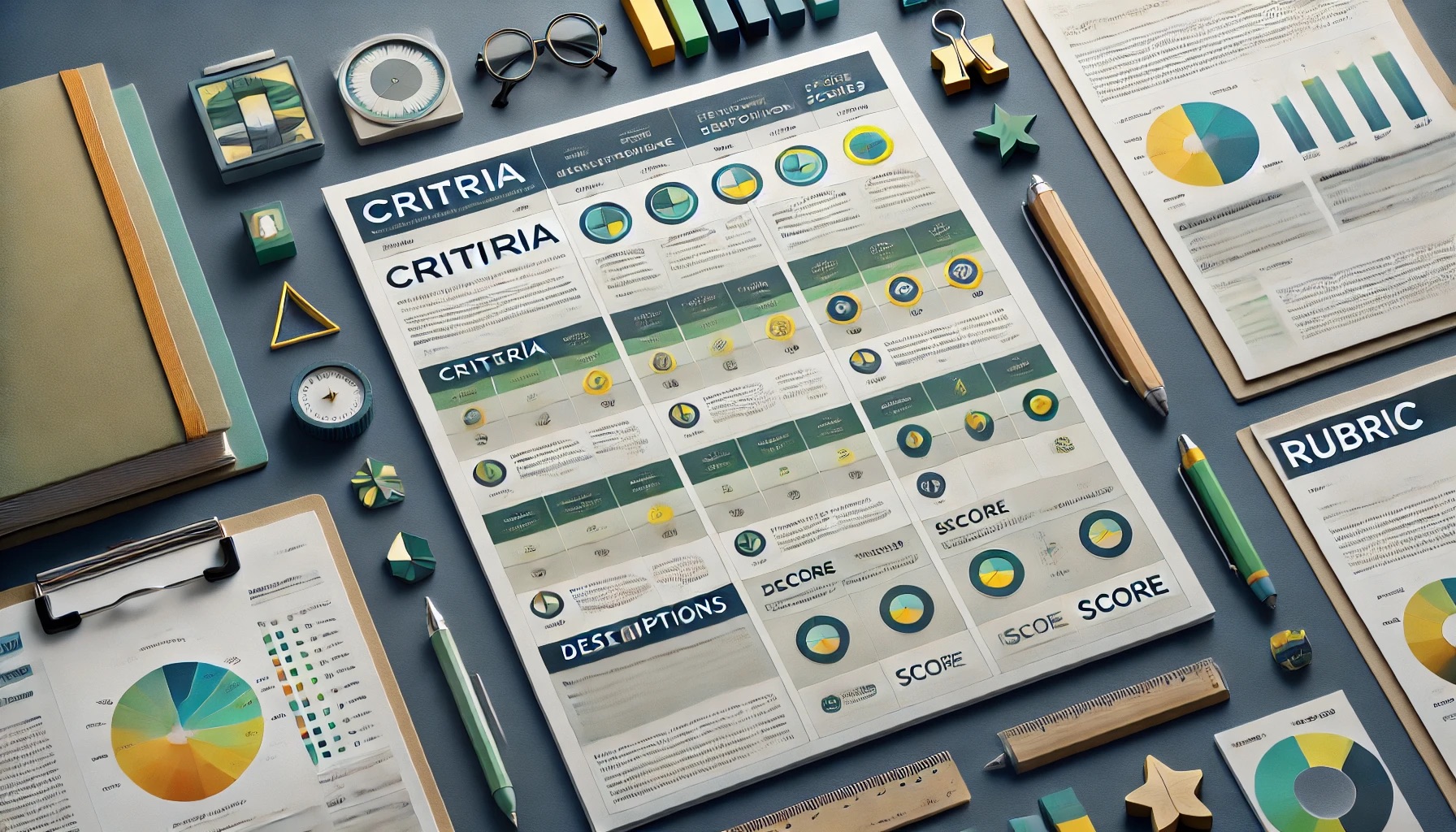Rubric Template: Streamline Project and Performance Assessment

Evaluating projects, presentations, and work performance can often be a challenging task, particularly when dealing with subjective aspects like creativity, communication skills, or teamwork. Establishing clear and measurable criteria is crucial to ensure fair and consistent assessment. This is where rubric templates come into play. A well-designed rubric template not only saves time but also provides valuable feedback, fostering improvement and setting clear expectations for students, employees, or project contributors.
This guide explores the importance of rubric templates, their benefits, and how they can be used effectively. Additionally, we provide examples of free rubric templates to help you get started.

What Is a Rubric Template?
A rubric template is a standardized assessment tool that defines specific criteria for evaluating performance, projects, or assignments. It typically includes:
- Assessment Tasks: The activities or projects to be evaluated.
- Evaluation Criteria: The dimensions or aspects being assessed, such as content quality, presentation skills, or creativity.
- Performance Levels: A scale to rate the level of achievement, often ranging from “Excellent” to “Needs Improvement.”
- Descriptions of Criteria: Clear explanations for each performance level to ensure consistency in grading.
Rubrics are widely used in educational institutions, corporate environments, and creative industries for evaluating everything from essays and group projects to work presentations and product prototypes.
Why Should Your Organization Use a Rubric Template?
Rubric templates are invaluable tools for organizations and educational institutions for several reasons:
1. Standardization
Rubrics ensure that all assessments are conducted using the same criteria, promoting fairness and objectivity.
2. Improved Feedback
A rubric allows evaluators to provide detailed, constructive feedback, helping individuals understand their strengths and areas for improvement.
3. Clear Expectations
Distributing rubrics in advance clarifies what is expected, motivating individuals to align their efforts with desired outcomes.
4. Efficiency
Rubrics streamline the assessment process, saving time by eliminating the need for ad-hoc evaluations.
5. Enhanced Performance
Knowing the evaluation criteria helps students and employees focus on critical areas, driving better performance overall.
Benefits of Using a Well-Crafted Rubric Template
1. Clarifies Ambiguities
Rubrics eliminate confusion by defining vague terms like “excellent communication skills” or “strong work ethic” into measurable attributes.
2. Facilitates Self-Assessment
Encourages students or employees to evaluate their own performance and reflect on areas needing improvement.
3. Improves Accuracy
Standardized criteria reduce inconsistencies in grading, ensuring fair assessments for all.
4. Saves Time
Pre-designed templates reduce the time spent creating evaluation criteria for each new project or assignment.
5. Enhances Motivation
Clear goals and measurable outcomes encourage individuals to strive for excellence.
6. Provides Evidence
Detailed rubrics serve as documentation for decisions, useful in discussions about grades or performance reviews.
7. Encourages Consistency Across Evaluators
Rubrics minimize subjective bias by providing clear guidelines for multiple evaluators.
Types of Rubric Templates
Here are several types of rubric templates that can be adapted for various needs:
1. Holistic Rubric Template
This type of rubric provides an overall score for a task by combining all criteria into a single rating. It is ideal for quick evaluations where detailed feedback is not required.
2. Analytical Rubric Template
Breaks down performance into distinct criteria, each scored separately. This template is perfect for providing detailed feedback and identifying specific strengths and weaknesses.
3. Developmental Rubric Template
Used to measure progress over time, this rubric focuses on growth rather than a final score.
4. Product Rubric Template
Designed for evaluating tangible outputs, such as prototypes, art projects, or software.
5. Participation Rubric Template
Evaluates engagement and contribution, often used in team projects or classroom settings.
Free Rubric Templates
Here are some free rubric templates tailored to different scenarios:
1. Holistic Rubric Template
- Source: WordTemplatesOnline
- Best For: Quickly evaluating tasks or projects with an overall score.
- Features: A three-tier rating scale with criteria like description, analysis, and evaluation.
2. Blank Rubric Template
- Source: Smartsheet
- Best For: Customizing your own evaluation criteria.
- Features: Prebuilt scoring scales with editable rows for personalized criteria.
3. Grading Online Discussion Boards Template
- Source: TemplateLab
- Best For: Assessing interaction and participation in online forums or collaborative projects.
- Features: Assigns points to criteria aligned with communication and engagement.
4. Product Rubric Template
- Source: WordTemplatesOnline
- Best For: Evaluating the quality of a product before market launch.
- Features: Includes categories like usability, design, and functionality.
5. Class Participation Rubric Template
- Source: DexForm
- Best For: Grading student engagement and collaboration in a classroom setting.
- Features: Clear scoring from 5 to 10 for contribution and attitude.
How to Use a Rubric Template Effectively
Step 1: Define Goals
Identify the purpose of the assessment and the outcomes you aim to achieve.
Step 2: Select or Customize a Template
Choose a template that aligns with your goals or modify a blank template to suit your needs.
Step 3: Communicate Expectations
Share the rubric with participants beforehand to clarify evaluation criteria and expectations.
Step 4: Consistently Apply Criteria
Ensure all evaluators use the rubric consistently to maintain fairness and objectivity.
Step 5: Provide Feedback
Use the rubric as a basis for constructive feedback, highlighting areas for improvement and recognizing achievements.
Conclusion
Rubric templates are indispensable tools for assessing projects, presentations, and performance. They provide clarity, save time, and promote fairness, making evaluations more consistent and effective. Whether you are an educator assessing students or a manager evaluating employee performance, a well-crafted rubric is a key to setting clear expectations and driving continuous improvement.
By leveraging the free templates and tips provided in this guide, you can enhance your evaluation process and foster better outcomes in your organization or classroom.
Source: A Rubric Template to Assess Projects and Work Performance!
Read more about this in our latest blog post: How to Use a Market Research Template for Accurate Insights










